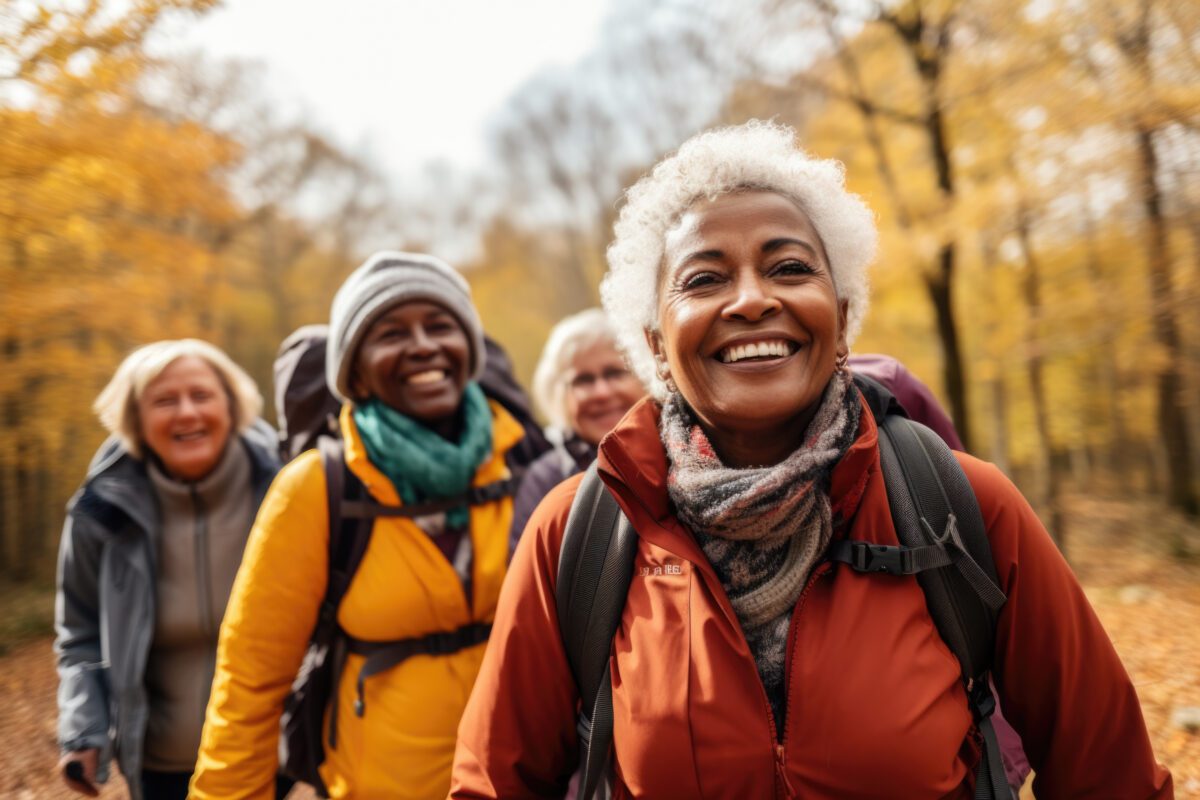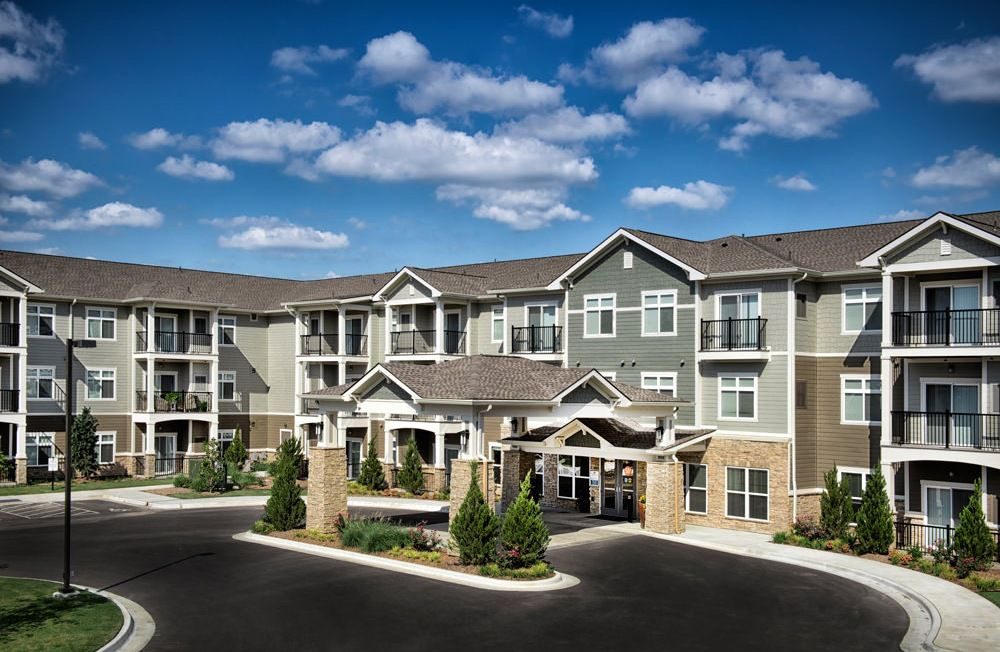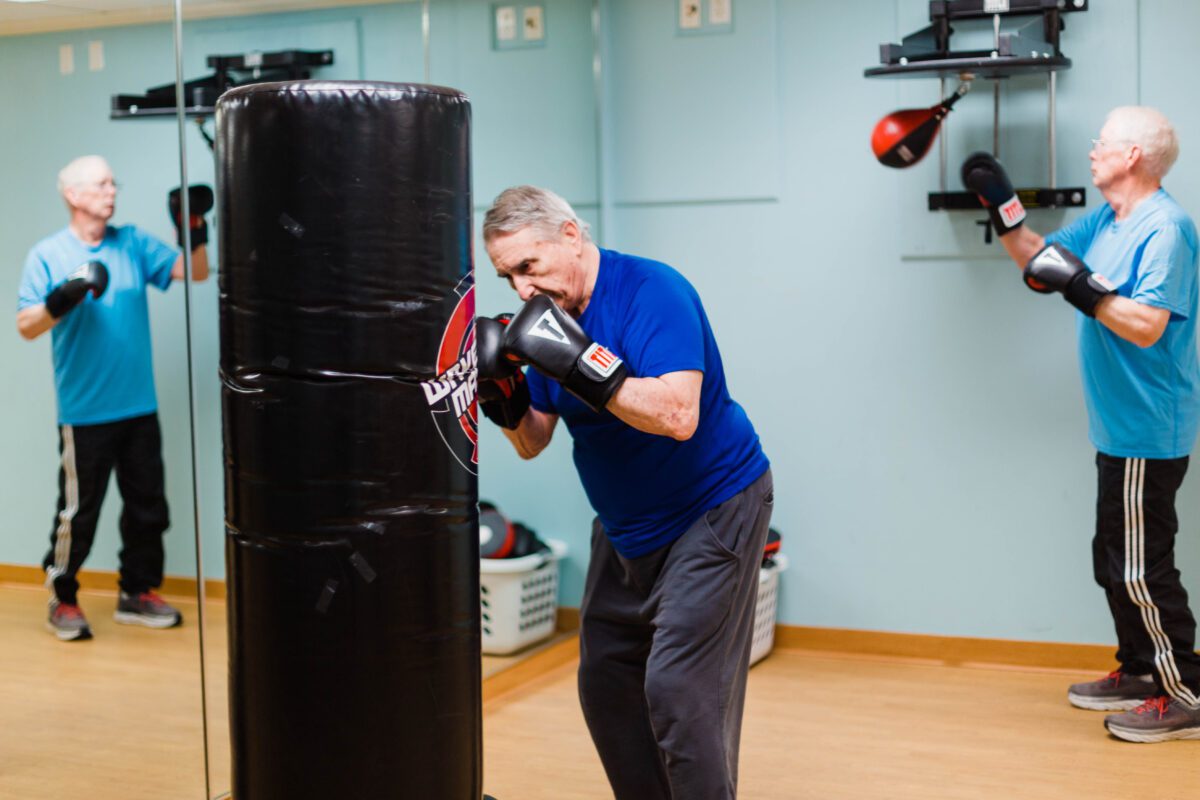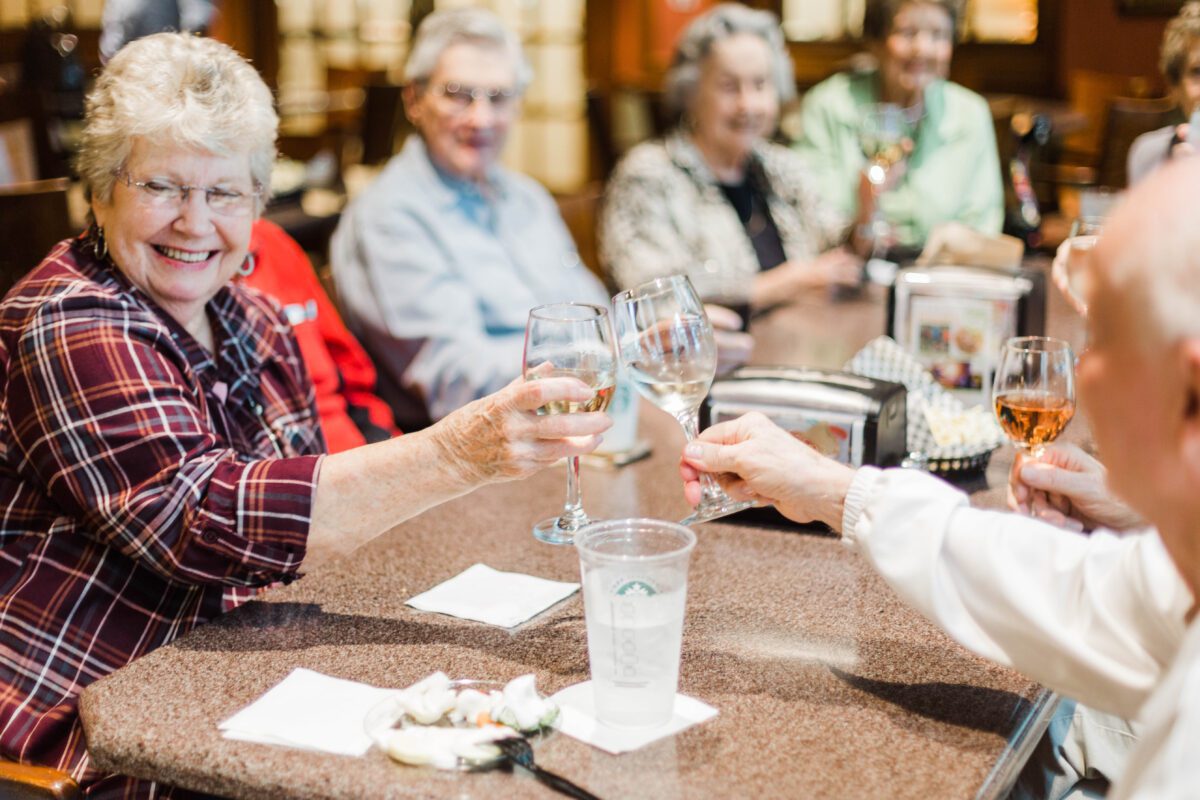The Pros of a Strong Mindset
The phrase “mind over matter” holds some truth when it comes to making the most of your golden years. Although an active lifestyle and genes go a long way, studies suggest that maintaining a positive mindset can have a significant impact on a person’s lifespan.
In a 2022 study published by the JAMA Network – an open access medical journal published by the American Medical Association – a group of nearly 14,000 adults, 50 years and older, were studied for four years. Researchers found that participants who demonstrated higher levels of aging satisfaction benefitted from reduced mortality rates around 43%. They were also more likely to engage in regular physical activity and experience lower levels of loneliness. Another study published by the National Library of Medicine showed that older adults who maintained an optimistic outlook lived up to 7.5 years longer than adults with negative self-perceptions.
“A lot of times, health is a feedback loop rather than a straightforward motion,” says Blake O’Brien, M.D., an internist with INTEGRIS Health. “To keep the mind healthy, one has to work on keeping the body healthy and vice-versa. Keeping a positive mindset and good self-perception about changes while aging helps keep the mind toward improving or maintaining the body’s ability to be active and stay fit. This, in turn, improves one’s perception and helps to generate a positive mindset.”

Like all other phases of life, growing older comes with challenges. However, there are several ways that older adults can find harmony with late-life changes, and in turn, boost their overall wellbeing:
Sustain a sense of purpose. Older adults can find meaningful ways to contribute to society in retirement. Volunteering for a cause, exploring new interests and joining a community of like-minded people can form pathways of connection.
Reject ageist stereotypes. Despite the growing population of older adults in the U.S., negative messages about aging are prevalent and inaccurate. Many older adults can stay active and sustain their independence for the majority, if not all, of their lives.
Stay in touch with family and friends. Social isolation is a common struggle for seniors and is often correlated to serious health conditions.
Try a new activity or hobby. Some older adults may find that they are unable to do the same things they did as a young adult. However, it’s never too late to develop a skill. Cultivating new hobbies can boost a person’s self-esteem and their quality of life.
New Medical Updates
For centuries, humankind has searched for an antidote to slow down or reverse the aging process. Growing older is inevitable, but pharmaceutical breakthroughs and the advancement of technology are helping treat and even prevent certain geriatric conditions.
In 2023, the Food and Drug Administration (FDA) approved Leqembi, a prescription medicine for adults that have mild cognitive impairment from early onset Alzheimer’s or dementia. Leqembi is the first prescription drug to receive full approval from the FDA; the drug reduces plaque buildup on the brain associated with Alzheimer’s, helping slow the progression of the disease.
The FDA also approved a vaccine for respiratory syncytial virus (RSV) in May 2023. RSV is an illness that annually kills 6,000-10,000 American adults 65 and older. GlaxoSmithKline is a targeted treatment for adults who are 60 and older, and it has been found to be 83% effective at preventing the spread of RSV.

Researchers have uncovered more information about the development and treatment of arthritis, which affects over 52 million people in the U.S. In recent years, researchers have found a connection between periodontal health and rheumatoid arthritis. Studies suggest that people with rheumatoid arthritis can lessen their arthritic symptoms by maintaining good oral hygiene.
O’Brien shares recent medical research regarding thirst in older adults.
“The mechanism for thirst in your body already turns on too late and turns off too early, as we’ve all heard from a parent or coach,” he says. “As adults age, this becomes even more apparent, as the time between thirst and dehydration shrinks to minimal levels. It is recommended to maintain hydration throughout the day rather than just drinking when thirsty.”
Although time will catch up to all of us, tried-and-true methods hold steady.
“When I was in residency … I began to notice a pattern in the healthiest people in their 70’s and 80’s,” says O’Brien. “They kept alcohol to a minimum, they didn’t use tobacco and they were active. Unfortunately, there are always some who will suffer a fate of genetic or random circumstance, leading to loss of independence. However, the most healthy, happy and longest living people were those that enjoyed life in moderation, and this reaped benefits as they aged.”
When Is It Time to Move?
Life is full of transitions. Knowing when to move into a retirement community or assisted living facility can be both a difficult and emotional decision.
There isn’t a magic number for deciding when the time is right; each person ages differently, and many seniors can maintain their independence with little to no help from others. However, there are some telltale signs that a new living arrangement may be worth considering.
“It may be time to explore independent living if cooking and cleaning are a burden, or something you would prefer someone else handle for you, or [if] you are feeling overwhelmed by home maintenance tasks,” says Kayla Nelms, corporate director of marketing at Cedarhurst Senior Living. Other signs to look for are frequent falls, poor hygiene, elevated health problems and chronic loneliness or isolation.
In independent living communities, seniors can benefit from a wide range of social activities and onsite amenities. Assisted living communities provide more intensive support to seniors for completing daily activities, such as dressing and taking medication.

“Caregivers act as an extension of the family when the family is not able to provide help around the clock,” explains Cari Bashaw, sales director at Covenant Living at Inverness.
Although some seniors may feel as if they’re giving up their freedom, it’s important to make the transition to a new living arrangement before a crisis occurs.
“The decision to move to an independent senior living community is best made when individuals are healthy enough to reap the benefits,” says Bashaw. “In independent living, residents can participate in many activities, make new friends, learn new hobbies and focus on what they enjoy doing.”
If timed right, the move can also prevent the worsening of health problems.
“Proactive decision-making also ensures that seniors receive the care and support they need before their health or safety becomes compromised,” says Nelms. “It gives families peace of mind, knowing their loved ones are living in a secure and nurturing environment where their wellbeing is a top priority.”
Stimulating Senior Activities: Beyond Bingo
Senior living communities can offer a wide range of activities and social events for their residents to enjoy.
“It is important to realize that ‘activities’ do not exist to keep people busy,” says Bashaw. “They are planned to help provide opportunities for fulfillment, purpose and enrichment.”
Exercise classes, aquatic programs, advocacy groups, and painting and gardening workshops are just a few of the activities that Covenant Living at Inverness offers to its residents. Each program is designed to promote wellness across one of eight crucial areas: spiritual; emotional; relational; physical; intellectual; vocational; environmental; and financial.

Resident-led activities also provide the opportunity for residents to tap into their special talents, learn from others and connect with peers who share the same interests.
“We work to find what is important to those [who are] living here… Our activities are as varied as our residents. From skydiving to poetry club, we want to provide opportunities for residents to live their best lives,” says Bashaw.
Cedarhurst Senior Living also aims for its residents to lead their fullest lives with engaging, hands-on programming that is tailored to residents’ unique interests. Guided by its ‘Living TRUE’ Framework, Cedarhurst gets input from its residents about activities and programs to offer every quarter.
The Cedarhurst staff regularly organizes fitness classes, group outings, social events and pool parties. All programming and activities are intended to foster social connections, encourage personal growth, and ignite a sense of purpose in residents.
“We are dedicated to creating a vibrant community where seniors can feel valued, respected and surrounded by genuine relationships,” says Nelms. “Seeing the smiles on their faces, witnessing their personal growth and sharing in their joy is what fuels our passion and drives us to exceed expectations every day.”
Senior Living Trends
Over the last 100 years, the number of American adults over the age of 65 has increased by nearly 1,000%. Not only is the population of the U.S. changing, but so are senior living trends.
“Retirees today are very different than those of 15 or 20 years ago,” says Bashaw. “Today’s older adults focus on giving back to their community through volunteering, improving their health with exercise programs designed to stimulate the body and mind, and eliminating unnecessary stress caused by the burdens of homeownership.”

Over the last two decades, independent living communities have become the most popular type of housing for seniors, according to Statista – an online platform that specializes in data gathering and visualization. This influx may be, in part, due to a higher sense of importance around wellness compared to years prior.
Advancements in technology have also been a game changer for many retirees. Wearable health devices and remote medical appointments provide more options for seniors to receive care and monitor changes in their health.























